|
Crewed Suborbital Vehicles
- sense or nonsense
About the activities of Virgin Galactic
and Blue Origin
1. Virgin Galactic
V.G. uses an airplane-like
vehicle called "Space Ship Two" with a hybrid solid-fuel motor. After
separating from its carrier aircraft, it climbs almost to the Karman
line and then lands on a runway, steered.
The predecessor, "SpaceShip
One", was a smaller experimental model, constructed by Scaled Composites,
with only one pilot. It has made six flights with an active motor and won
the Ansari X-Prize for reaching the altitude of 100 km.
| VSS2 Unity |
VSS2 Enterprise |
VSS 1 |
|

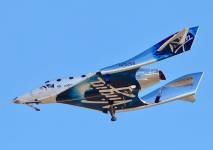
|
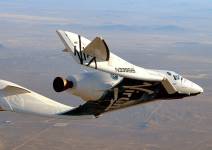
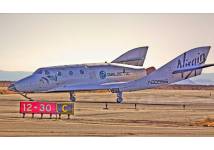
|

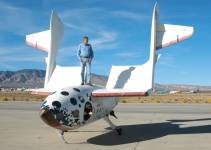
|
Flights (powered)
|
Vehicle |
Engine |
Flight |
Date |
Altitude (km) |
Crew + Pass. |
Result |
|
VSS
2
|
Hybrid
engine 3
V.G.
|
Unity 22 |
11.07.2021 |
86.1 |
2 + 4 |
Inagurated full scaled
launch, successful |
|
Unity 21 |
22.05.2021 |
89.2 |
2 |
Full test, successful |
|
Unity 20 (?) |
12.12.2020 |
- |
2 |
Abort prior ignition |
|
Unity VF-02 |
22.02.2019 |
90.0 |
2 + 1 |
Full test, successful |
|
Unity VF-01 |
13.12.2018 |
82.7 |
2 |
Full test, successful |
|
Unuty VP-03 |
26.07..2018 |
52.0
|
2 |
Third motor test
in free flight |
|
Unuty VP-02 |
29.05.2018 |
34.9
|
2 |
Second motor test
in free flight |
|
Unity VP-01 |
05.04.2018 |
25.7
|
2 |
First motor test
in free flight |
|
Hybrid
engine 2
SpaceDev
|
Enterprise PF04 |
31.10.2014 |
?
|
2 |
Crashed and shattered |
|
Enterprise PF03 |
10.01.2014 |
22.0 |
2 |
Power Test successful |
|
Enterprise PF02 |
05.09.2013 |
14.0 |
2 |
Power test successful |
|
Enterprise PF01 |
29.04.2013 |
17.1 |
2 |
Power Test successful |
|
|
|
VSS
1
|
Hybrid
engine 1
SpaceDev
|
|
04.10.2004 |
112.0 |
1 |
|
|
|
29.09.2004 |
102.9 |
1 |
|
|
|
21.06.2004 |
100.1 |
1 |
|
|
|
13.05.2004 |
64.4 |
1 |
|
|
|
08.04.2004 |
32.0 |
1 |
|
|
|
17.12.2003 |
20.7 |
1 |
|
Propulsion
|

|
|
Vehicle
|
Motor |
Nozzle
|
Thrust / Isp |
Propellant
|
|
VSS2
Unity
|
V.O. |
special
|
unknown |
Thermoplastic
polyamide + Nitrous oxide
|
|
|
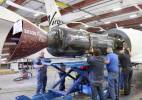

|
|
Vehicle
|
Motor |
Nozzle
|
Thrust / Isp |
Propellant
|
|
VSS2
Enterprise
|
SpaceDev
(2) |
special
|
unknown
|
HTPB + Nitrous oxide
|
|
|
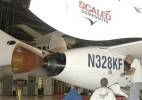
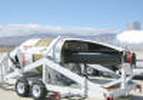
|
|
Vehicle
|
Motor |
Nozzle
|
Thrust / Isp |
Propellant
|
|
VSS1
S.C.
|
SpaceDev
(1) |
normal
|
unknown
|
HTPB + Nitrous oxide
|
|
2.
Blue Origin
B.O. uses a liquid-fueled and vertical starting one-stage launcher called
"New Shepard" with a capsule on top that has an escape motor. After
separation, the capsule climbs without extra drive up to the Karman
line and then lands by parachute. The launcher lands reusable by the engine.
Flights
|
Vehicle |
Flight |
Date |
Altitude (km) |
Passenger |
Result |
|
New
Shepard 4
(PM-3 No.4)
|
23 |
12.09.2022 |
|
- |
Failure. Booster crash.
Capsule landed |
|
22 |
04.08.2022 |
|
6 |
Sixth successful crewed
launch |
|
21 |
04.06.2022 |
|
6 |
Fifth successful crewed
launch |
|
20 |
31.03.2022 |
|
6 |
Fourth successful
crewed launch |
|
19 |
11.12.2021 |
|
6 |
Third successful crewed
launch |
|
18 |
13.10.2021 |
106 |
4 |
Second successful
crewed launch |
|
17 |
26.08.2021 |
105.6 |
- |
NASA eqipment test |
|
16 |
20.07.2021 |
106 |
4 |
First successful crewed
launch |
|
15 |
14.04.2021 |
106.3 |
- |
Successful tests
of the new crew capsule 2.0 |
|
14 |
14.01.2021 |
105.8 |
- |
|
New
Shepard 3
(PM-3 No.3)
|
13 |
13.10.2020 |
107.0 |
- |
|
12 |
12.12.2019 |
104.5 |
- |
|
11 |
02.05.2019 |
105.6 |
- |
|
10 |
23.01.2019 |
106.9 |
- |
|
9 |
18.07.2018 |
118.8 |
- |
|
8 |
29.04.2018 |
105.9 |
- |
|
7 |
12.12.2017 |
100.6 |
- |
|
New
Shepard 2
(PM-3 No.2)
|
6 |
05.10.2016 |
93.7 |
- |
Test of the capsule-escape
system |
|
5 |
19.06. 2016 |
101.0 |
- |
Tests of separation
of booster and capsule |
|
4 |
02.04.2016 |
103.4 |
- |
|
3 |
22.01. 2016 |
101.7 |
- |
|
2 |
23.11.2015 |
100.5 |
- |
|
PM-3
No.1
|
1 |
29.04.2015 |
93.5 |
- |
Rocket landing system
defect; destroed |
Propulsion
|
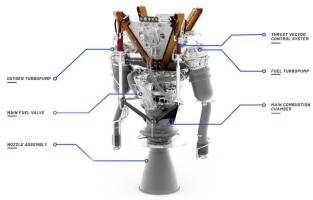
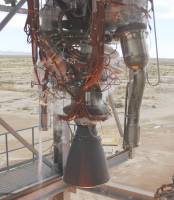
|
|
Vehicle
|
Engine |
Thrust
/ Isp (s.l.)
|
Thrust / Isp vac |
Propellant
|
|
New Shepard
|
BE-3 |
489.3 kN / 360 sec |
550.5
kN / 405 sec |
LH2/LOX
|
|
|